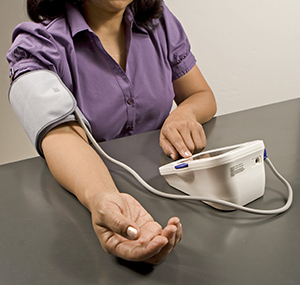For Women: Take This Risk to Heart
Heart disease is the top killer of women. Most women between the ages of 40 and 60 have at least one risk factor for the disease. But many don't realize it. They also don't know about the sometimes subtle signals of a heart attack.
Why the disconnect? In general, heart disease has been perceived as an older person's disease that need not concern women until menopause. For years, women also thought hormone therapy (HT) would protect them from heart trouble. But heart attacks can and do occur at any age. Plus, we now know that HT may actually raise the risk for heart disease in some women.
A common form of heart disease is coronary artery disease, which affects the blood vessels of your heart. Heart disease also includes atherosclerosis, or the thickening and hardening of your arteries, as well as stroke, peripheral vascular disease, and heart failure.

Risk factors
Risk factors for heart disease can be divided into those that suggest a major risk and those that lead to an increased risk. Major risk factors are:
Factors that could lead to an increased risk include stress and drinking too much alcohol. For women, that means more than one drink a day.
Starting at age 20, women should know their blood pressure. Check your blood pressure at least one time every 2 years if your blood pressure is less than 120/80. If it is higher, your healthcare provider will talk with you about checking it more often. Know your cholesterol levels. Have them checked at least every 4 to 6 years. You may need to get them checked more often if you have increased risk factors, such as family history of heart attacks at a young age. This means younger than age 50. One red flag is a high level of LDL ("bad") cholesterol, which clogs arteries, and a low level of HDL ("good") cholesterol, which clears arteries.
Knowing your risk factors is vital. The more risk factors you have and the worse they are, the greater your risk for heart disease. Once you know your risk factors, you can learn whether you're at high, intermediate, or low risk for heart disease. Then you can set goals and work with your healthcare provider to reach them.
Risk factors for heart disease that are specific to women include:
-
Being past menopause
-
Hysterectomy
-
History of, or current, use of birth control pills
-
Pregnancy and the high-risk complications of pregnancy, including diabetes, pre-eclampsia, and eclampsia
Lifestyle changes
The following lifestyle changes will put you on the path to a heart-healthy life:
-
Reach and keep a healthy weight. You'll reduce your blood pressure, cholesterol, and diabetes risk—three key risk factors. For apple-shaped women, losing spare-tire fat is vital. Belly fat is linked to higher levels of triglycerides, a blood fat that raises your risk for heart disease.
-
Trim saturated fat and salt from your menu. When you can, trade butter for canola or olive oil. Swap red meat for seafood, a good source of omega-3 fats that helps reduce triglycerides, clotting, and blood pressure.
-
Move more. Exercising at a moderate intensity for at least 150 minutes a week can help lower your blood pressure. It can also strengthen your heart, decrease stress, and lower weight. Adding strength training or resistance exercises 2 days a week can also increase your metabolism and help maintain a healthy weight.
-
Quit smoking. Smoking is the most common risk factor for women. It triples your heart attack risk. It may take a few tries to quit. You may need to address your addiction by using a patch or chewing gum. You may also need to change your behavior. For example, try munching on a carrot when cravings strike. Talk with your healthcare provider about tools or medicines that can help you quit.
-
De-stress daily. Visit a friend. Listen to music. Take a yoga class. Putting yourself on your "to do" list and finding ways to defuse stress will help slow your breathing and heart rate as you lower your blood pressure.
-
Consider behavioral counseling . Behavioral counseling may help you reach your goals for a healthy diet and increased physical activity.
Heed these symptoms
If you have to sit down after light activity, such as after you clear the dishes, a heart attack could be in your near future.
Unshakable fatigue and sleeplessness appear to be early warning signs of a woman's heart disease. Other symptoms include:
-
Shortness of breath (very common in women)
-
Nausea or heartburn
-
Uncomfortable chest pressure (instead of chest pain, which is a more typical symptom for men, although it may still occur in women)
-
Pain that spreads to the shoulders, neck, or arms
If you have these symptoms, especially if they last more than 5 minutes, call 911.